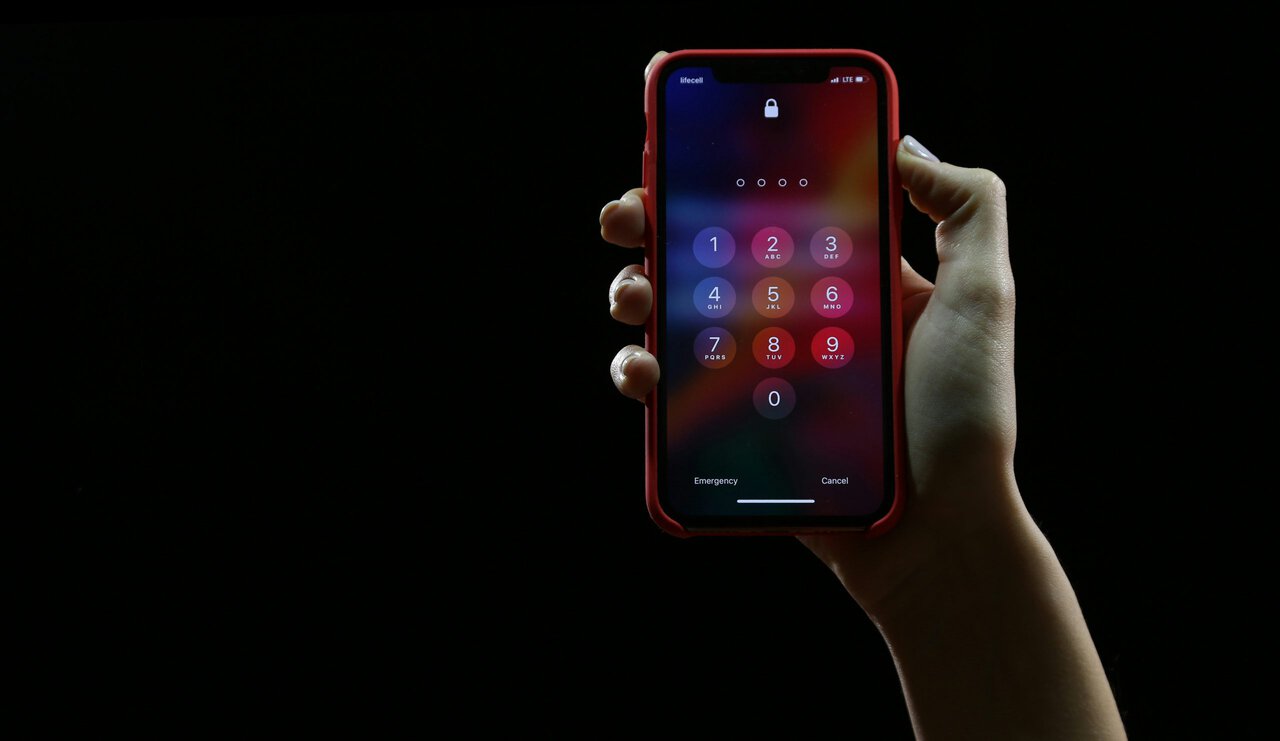In an age where our smartphones have become extensions of ourselves, the line between personal and professional life is increasingly blurred. For many employees, the comfort of a personal phone can quickly turn into a source of anxiety when company monitoring apps or software stealthily track their every move. Imagine scrolling through your social media feed only to realize that your employer has access to your private messages, locations, and even app usage—a reality that raises significant concerns about privacy and autonomy in today’s digital workplace.
If you’re feeling like Big Brother is always watching, you’re not alone. The good news is that reclaiming control over your personal device doesn’t have to be a daunting task. In this article, we’ll explore effective methods to identify and remove intrusive monitoring software from your phone while maintaining compliance with company policies. Whether you’re concerned about surveillance or simply want to restore some much-needed privacy in your life, our guide will empower you with the knowledge and tools needed to safeguard your personal space from corporate oversight. So, let’s dive in and take back what’s rightfully yours!
Recognizing Signs of Company Monitoring
In today’s hyper-connected world, recognizing the signs of company monitoring on your personal phone is crucial for maintaining your privacy. One of the clearest indicators is unexpected changes in your device’s behavior—frequent app crashes or unusual battery drain can hint at surveillance software running in the background. If you notice unfamiliar applications that you didn’t download or system updates happening without your consent, it’s time to take a closer look.
Moreover, pay attention to any odd notifications or messages that don’t seem relevant to you; these could be red flags alerting you to unwanted tracking. Another subtle sign may come from overhearing conversations about workplace performance tied directly to data from personal devices—this often indicates a blurred line between professional oversight and personal privacy invasion. Ultimately, maintaining awareness of these signs empowers you to protect not just your personal information but also the boundaries between work and home life. By being vigilant, you’re not merely defending against potential overreach but affirming the right to maintain control over your own digital footprint.

Assessing Your Phone’s Security Settings
When it comes to ensuring your phone’s security, delving into the settings can reveal much more than you anticipated. Start by examining permissions granted to apps; many users overlook how seemingly harmless applications can siphon off sensitive data. By routinely auditing app permissions, you maintain control over what information is shared and ensure that only trusted applications have access to your contacts, photos, and location.
Moreover, consider enabling two-factor authentication (2FA) wherever possible. While it may seem like an additional hurdle when logging in, 2FA acts as a formidable barrier against unauthorized access. Pair this with regular software updates—which often include critical security patches—and you create a robust defense against intrusions. Additionally, exploring built-in privacy features tailored for specific models or operating systems might unlock enhanced protections that go beyond conventional expectations. Remember, a secure phone not only safeguards personal information but also liberates you from the fear of unwanted corporate surveillance lurking in the background.
Researching Your Company’s Policies
Understanding your company’s policies is an essential step before attempting to remove monitoring tools from your personal phone. Dive deep into the employee handbook or any official documentation regarding device usage and data privacy. Often, companies implement monitoring measures not merely for oversight but to protect sensitive information and maintain cybersecurity protocols. Familiarizing yourself with these policies allows you to navigate potential pitfalls and arm yourself with knowledge that could be pivotal in discussions with HR or management.
Moreover, while some organizations may employ strict monitoring practices, others may have more flexible guidelines that accommodate the use of personal devices for work purposes, especially in today’s hybrid work environments. Engaging in conversations with colleagues can also shed light on unwritten rules and nuances about device policy enforcement. Remember, transparency about your concerns regarding privacy might lead to a more understanding response from your employer than anticipated—especially if you frame it within the context of maintaining a healthy work-life balance. Ultimately, comprehending your company’s stance not only empowers you but also lays the groundwork for proactive dialogue around digital privacy rights in an increasingly monitored workplace landscape.

Backing Up Important Personal Data
Backing up important personal data is not just a precaution; it’s an essential practice in today’s digital landscape. As we navigate the process of removing company monitoring from our phones, we often overlook the vulnerabilities that come with such actions. Think about all those irreplaceable moments captured in photos, essential documents, and vital contact information. An unexpected loss could leave us scrambling to recover what can’t be replaced. Therefore, establishing a reliable backup system—whether through cloud services or physical external drives—is crucial for ensuring your personal life remains uninterrupted.
Moreover, backing up data gives you peace of mind as you make changes to your device’s setup. With seamless access to your files across different platforms, you’ll feel empowered during this transition period. Consider using tools that automatically back up data regularly and check their settings frequently to ensure everything is covered without manual effort. This way, when it’s time to cut ties with company monitoring on your personal phone, you’ll have confidence knowing that every precious byte of your private life is safely stored away—ready for retrieval at any moment while minimizing disruption during such a pivotal change.
Uninstalling Monitoring Applications Safely
Uninstalling monitoring applications from your personal phone is not just a simple drag-and-drop action; it requires a mindful approach to ensure that you protect your privacy while maintaining device functionality. Before you begin the uninstallation process, it’s crucial to back up your data, as some monitoring apps may inadvertently disrupt essential files or settings. Having a copy of important information ensures that you won’t lose any crucial assets during this transition.
After backing up, inspect your device for potential hidden configurations left behind by the monitoring app. Many of these intrusive applications might embed themselves deeper into system settings or user permissions, making it critical to explore and revoke any additional access they previously had. You should also consider resetting certain aspects of your phone—such as network settings or application permissions—to restore complete autonomy over how your personal device operates in the future. Additionally, remain vigilant to monitor for persistent effects long after the app has been removed; unexpected behavior can be an indication of lingering software components.

Changing Passwords and Security Codes
Changing passwords and security codes is not merely a routine task; it’s a critical defense mechanism against unauthorized access. When you remove company monitoring from your personal phone, it’s an opportune moment to reassess the strength of your passwords. Consider adopting a password management tool that can create unique and complex combinations for each account, minimizing the risk of data breaches stemming from reused or weak credentials. Aim for phrases or questions only you would know as security codes—these are easier to remember but much harder for cyber intruders to crack.
Moreover, routinely changing these key security elements helps create an ever-evolving barrier against potential threats. It also instills habits that contribute to overall digital hygiene. Think about enabling two-factor authentication whenever possible; this adds an extra layer of protection by linking your login process with personal devices or apps you control. This proactive approach not only safeguards your personal information but empowers you in reclaiming the privacy lost with corporate oversight on your device.
Conclusion: Taking Control of Your Privacy
Taking control of your privacy is not merely about removing monitoring software; it’s an empowering journey towards reclaiming autonomy over your digital footprint. In a world where personal devices often blur the lines between work and home, understanding the tools at your disposal can help you navigate this complex landscape with confidence. By actively managing which apps access your information and being selective about what data you share, you’re not just protecting yourself from unwanted surveillance; you’re also cultivating a sense of ownership that contributes to overall well-being.
Moreover, embracing privacy is an ongoing commitment—one that requires vigilance as technology evolves. Regularly updating settings, educating yourself on new security measures, and seeking resources dedicated to digital wellness are imperative steps that extend beyond mere compliance. As companies increasingly rely on data analytics for decision-making processes, your voice in this conversation can influence how these practices shape societal norms around privacy rights. Ultimately, taking charge of your personal device fosters a culture where individual rights are respected and valued—not just in theory but in practice.
